
International competition organizer Bee Breeders has announced the winners of this year's Last Genocide Memorial Competition.
The brief asked designers for a memorial that would honor victims of various genocides throughout history. The challenge was sponsored by Canada's Brampton Tamil Association (BTA) and Brampton Tamil Seniors Association (BTSA), who are both actively seeking legislation that would formally recognize various war crimes that occurred between 1983 and 2009 in the Sri Lankan Civil War.
The memorial will sit on a site inside Brampton, Ontario's Donald M. Gordon Chinguacousy Park. Winning designs of the competition will be considered for construction and are specified to be exactly 3.7 x 5.5 meters.
Bee Breeders put together a dedicated jury of experts including LWK + PARTNERS Managing Director Kerem Cengiz, NArchitekTURA's Bartosz Haduch, After Architecture co-founder Kyle Schumann, David Telerman, Smith Dalia's Joseph Weishaar, AIA, and Françoise N’Thépé, who runs the Paris-based practice FRANÇOISE N’THÉPÉ ARCHITECTURE & DESIGN.
Each winning project and special honoree can be viewed below.
1st Prize: Wounded Earth Healing Time by Peter Vatkov (United States)
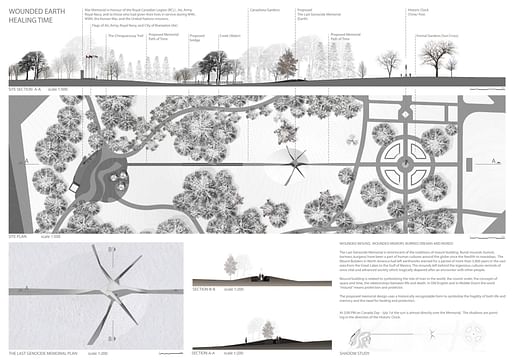
Jury commentary: "Wounded Earth / Healing Time is based on the ancient solar symbol of the sun cross, consisting of an equilateral cross inside a circle, integrated within the landscape to simultaneously create a fracture in the earth, and to recall the traditions of mound building. The jury writes: “The landscape integration is particularly well organized regarding the context of the park, a land art piece evoking an earth wound. More than any other design present in the short-list, this design fulfills the stated goals of the competition brief by 1) Helping communicate these tragedies to different groups of people around the world, 2) educating visitors of the causes of these terrible events, 3) describing their impact on the wider communities, and 4) doing so in a sensitive way that shows respect to the many individuals who lost their lives during genocides. Further, it does more than any other design to consider the site as a complete experience and integrate those pieces into the design of the memorial itself. While the design arguably goes beyond the physical boundaries stated within the competition brief, the design demands the infraction and uses it to great advantage. The intersecting paths with a collage of images and texts bear witness to specific stories, cultures and languages, but also show the evolution of different narrative modes. This project is a reminder and perpetuation of painful, often forgotten facts using simple, permanent and timeless means. It is a poetic, symbolic and subtle proposition."
2nd Prize: THE GENERATOR OF PAIN AND LOVE by Sizhe Wang, Changqing Ye, and Xinyu Zhu (China)
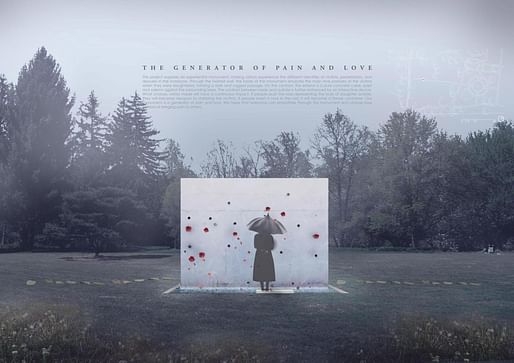
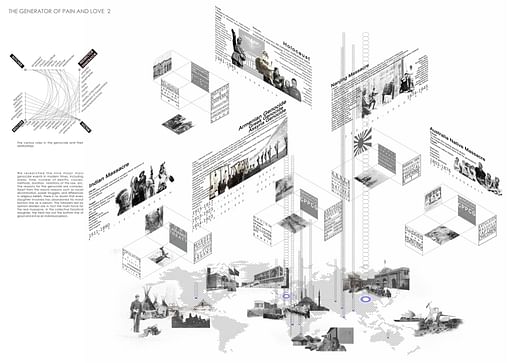
Jury commentary: "The Generator of Pain and Love is an experiential monument for visitors which displays information regarding the lives of “victims, perpetrators and rescuers.” According to the jury: “This design should be commended for its ingenious use of spatial navigation to address the competition brief. We often think of architecture as being necessitated by human activity, but rarely do we see it as the driver of our physical behavior. By pairing sensory and physical responses to the educational content, this designer has strengthened the connections that visitors will make with the subject matter, which is remarkably difficult to achieve. The project vividly simulates, through the architectural form, the movements of oppression It is an inspiring architecture that engages not only the minds of visitors but also their bodies. The proposal reflects both physicality and emotional trauma the genocide represents in its special distribution and through its metaphors, insertions and its simple interactivity makes this entry resonate deeply.”
3rd Prize and BB Green Award Winner: Integrity by Georgy Fedulov (Russian Federation)

Jury commentary: "Integrity is shaped to personify humanity as a whole, where elements in its aggregation are missing to depict lives of those taken by genocide - the results is a structurally and visually faulted structure. The jury writes, “One of the critiques of memorials in modern culture is their permanent impact on the landscape and the costs and energy expended in their maintenance. With this memorial concept, the designer has well paired the esoteric idea of violence eroding society with the physical manifestation of erosion and decay. While there are many ways to physically portray this, the choice of a void within the collection of pipes makes for a particularly strong statement. The material used makes the object change its appearance depending on weather conditions and light, but it can also deepen its raw patina, symbolically emphasizing the passage of time - time, which does not always heal all wounds. The ripped pipes, their corrosion, their tenuous and precarious verticality are analogies to our loss of humanity when we turn our faces from acts of genocide. There is an interesting contrast between solid material - rusty steel and volatile - water. Thanks to the simple and reasonable solutions used, this project has a good chance of being constructed.”
BB Student Award: THE HOME TALE by Hamid Khalili and Mohammad Mobin Mahdizadeh Kaffash (Iran)
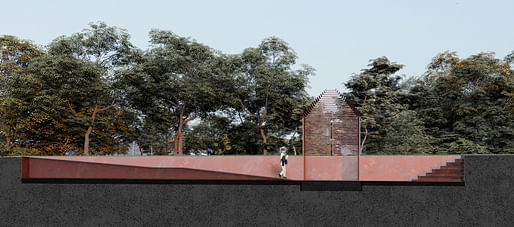
CLIENTS FAVORITE: Lotus- The Last Genocide Memorial by Berina Ramic (Bosnia and Herzegovina)

MICROHOME Kingspan 2024/25
Register by Thu, Feb 13, 2025
Submit by Tue, Mar 18, 2025

Land Art Generator Initiative 2025 Fiji: Climate Resilience for Island Communities
Register/Submit by Mon, May 5, 2025
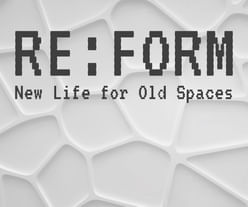
Re:Form – New Life for Old Spaces
Register by Wed, Jan 22, 2025
Submit by Tue, Sep 2, 2025

The Last Nuclear Bomb Memorial / Edition #5
Register by Thu, Jan 16, 2025
Submit by Wed, Feb 19, 2025
No Comments